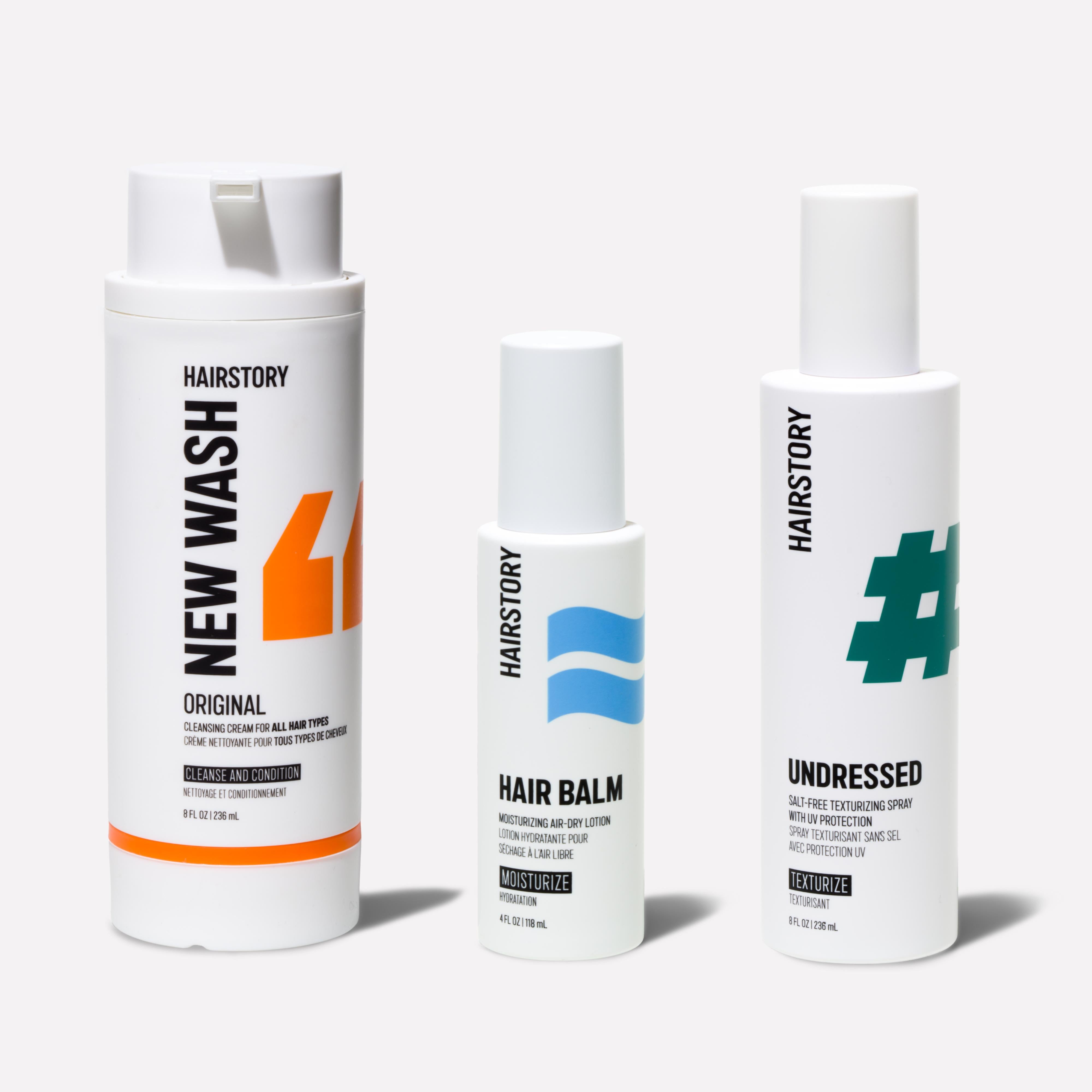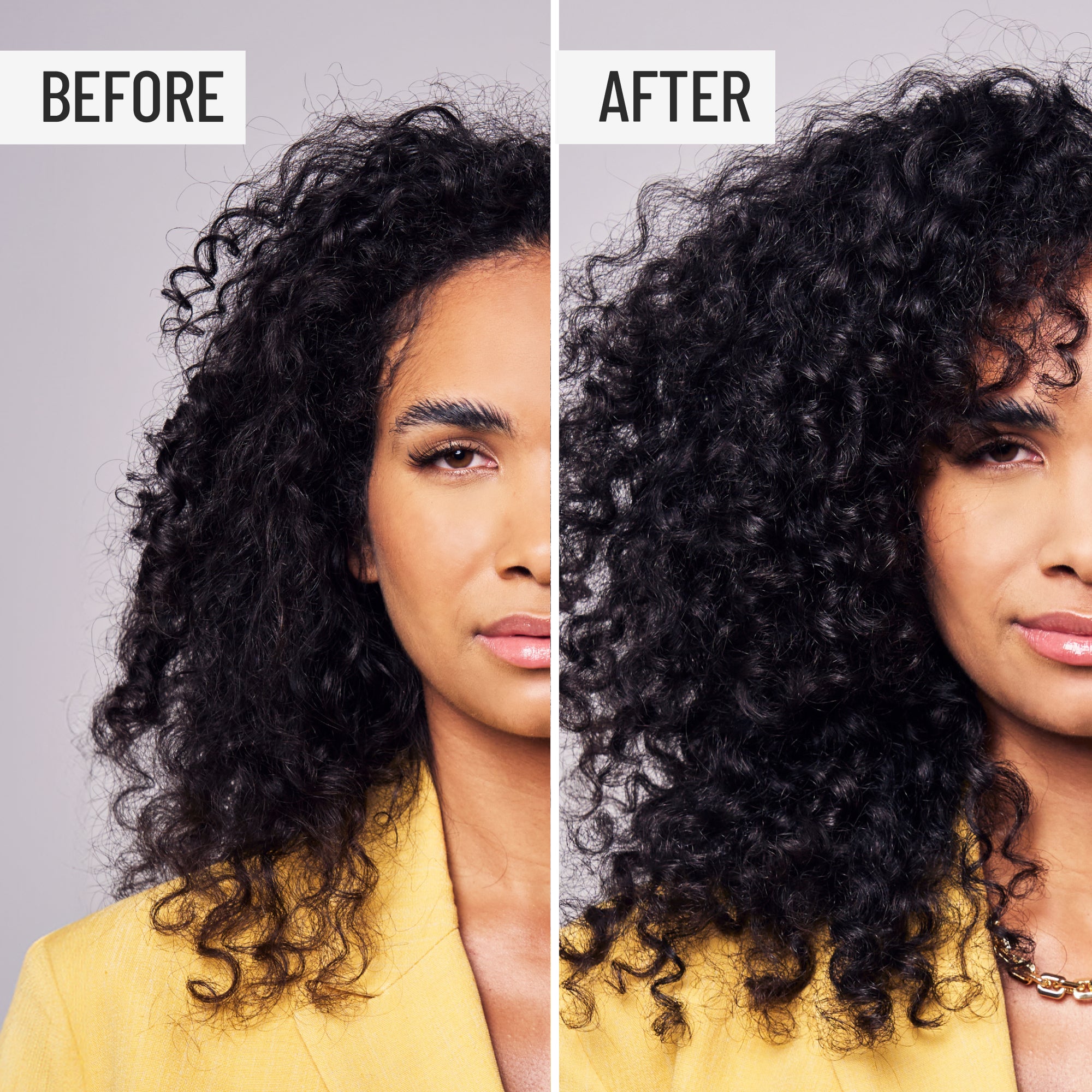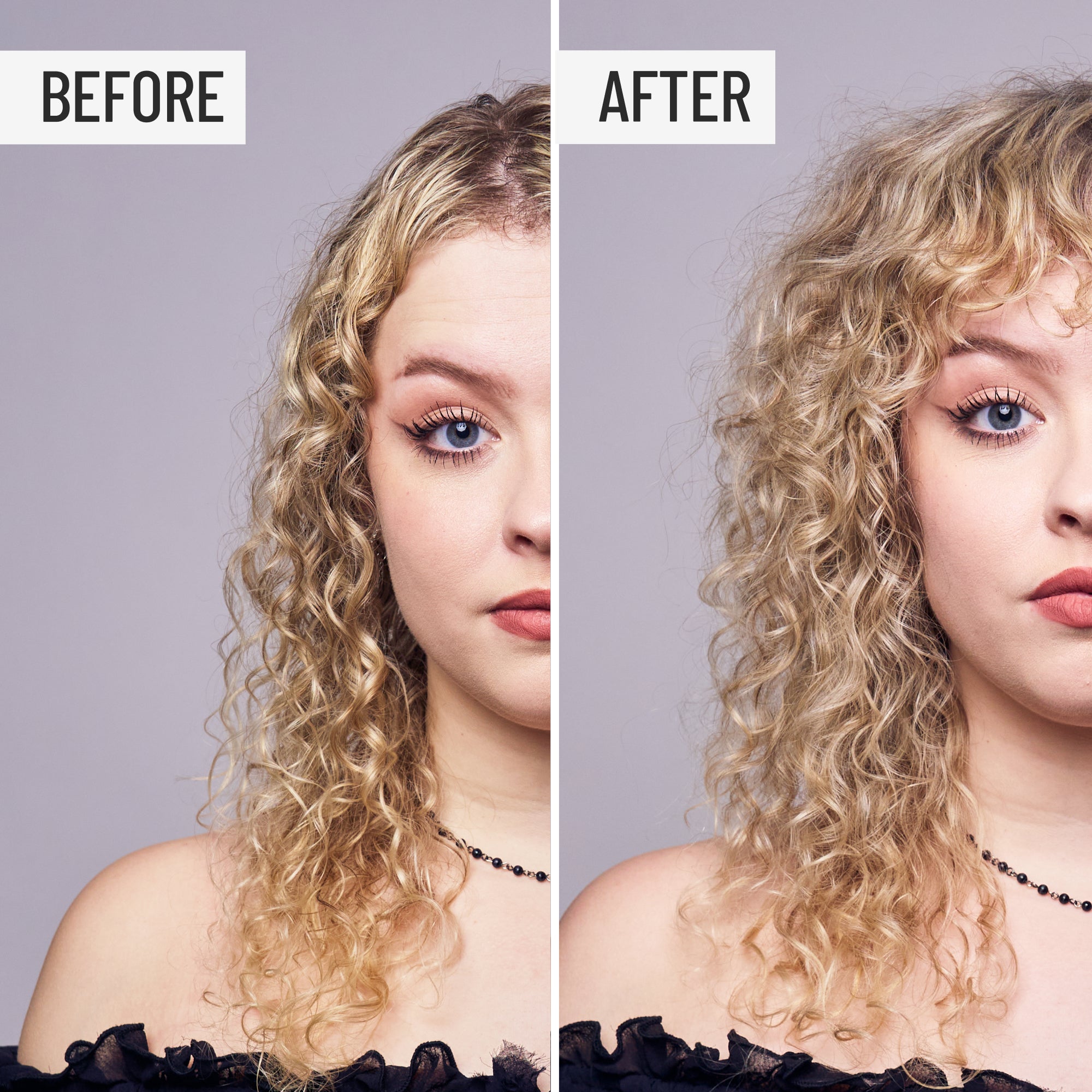The best way to get your head around styling your hair is to learn more about your hair type, how it grows, and how it behaves from straight to wavy, fine to thick.
While it is possible – and common – for several hair types to grow from any one scalp, here are basic guidelines for customizing men’s hairstyling and grooming techniques – starting at the roots.
THE FOLLICLE FACTOR
First, no two heads of hair are the same, and one of the factors that determine which type of hair you grow is the shape of your follicles – the cavities in your scalp where each hair takes root. The flatter or more oval the opening of your follicles are, the more likely you are to have curly or coiled hair. The more circular the openings are, the straighter your hair will be. It’s a simple matter of extrusion and how the long fibers of proteins are formed as they grow.
THE THICKNESS FACTOR
How thick or fine individual strands are will play a part in how receptive men’s hair will be to styling, which makes sense; a fine wire is easier to bend and stretch, and a thicker one is more rigid. So when it comes to altering the natural shape with a product or heat, thickness factors into how easy it will be and how long a style will last. Fine hair often won’t hold the shape you give it for long. Medium hair is pretty easy to style and typically holds well. Coarse strands often found in thick hair can be more challenging – less yielding and more resistant to being manipulated.
important to treat all hair types with care and be well-versed in how to grow healthy hair instead of unknowingly doing damage and experiencing hair loss.
Thickness Tests
To get a feel for whether your hair is considered fine, medium, or coarse, take a strand from your hairbrush and compare it next to a length of ordinary sewing thread, one that is close to your hair color. The thread is a standard for “medium” thickness, and if your hair is thinner than the thread, you’re “fine;” anything thicker than the thread puts you in the “coarse” category.
A thin hair strand is almost translucent when you hold one up to a light source. A medium hair strand rolled between your thumb and index finger will feel like cotton thread but not stiff or rough. Coarse hair strands are easy to see and have a hard feel between thumb and finger.
STRAIGHT HAIR
Fine, straight hair is the most pliable of all and can be styled relatively easily, though it may not hold styles as long as other types will. Many styling products can be used successfully to change and shape it, but smaller amounts are recommended to avoid overwhelming it and causing it to fall flat. Heavy hair wax, oily pomade, and hair gel can be tricky. Stick to lightweight creams and balms, and knowing how to add volume to men’s hair is key. Shorter cuts can also help fine, straight hair appear thicker.
Medium, straight hair is the easiest to manage, the most responsive to change, and the most cooperative with most styling products. Your wish is essentially its command.
Coarse, straight hair is the most resistant to styling and having its shape altered, and you might have to lean into a bit more muscle from a hair wax, styling cream, or putty to do your bidding and make your thick hair behave.
WAVY HAIR
Fine, wavy hair is quite easy to straighten but like fine, straight hair can be easily weighed down by heavier or very oily styling products. In addition, if your scalp produces a lot of natural oils, your hair might appear heavy. Getting volume by raising the roots can be challenging but usually, depending on men's hair type, lightweight, water-based gels and mousses are best, and sparing amounts will likely go far.
Medium, wavy hair often has a distinct s-shape beginning at mid-length, can be more resistant to straightening, and require stronger hold creams to do so. Alternatively, its natural curves can be easily enhanced with sea-salt products such as Undressed to keep textured hair looking lively.
Coarse, wavy hair typically forms s-shapes close to the roots and may tend to frizz and be susceptible to drying out, so you can avoid dry hair by letting it do its thing without applying heat to help it retain moisture. All you may need is a moisturizing cleanser, and a leave-in conditioner such as Hair Balm to enhance the natural wave pattern while helping balance its water and oil content and keeping it groomed and frizz-free.
CURLY HAIR
Loose curls tend to appear shiny and are relatively easy to maintain. To keep the shape well defined, mix one part Hair Balm to eight parts water in a spray bottle, shake well, and mist liberally from time to time. Loose curly hair is the easiest to “stretch” and coax toward straight with a moderate hold cream or wax.
Tighter curls become more prone to drying out due to sharper curves in the cuticle, the outer layer of scales like snakeskin, or shingles on a rooftop. A good leave-in conditioner should be a staple. Look for humectants that attract moisture and keep it well-sealed such as Wax with Shea Butter and beeswax applied to damp hair.
Very tight curls or densely-packed corkscrews often appear to be more matte than others. Frizz can be an issue here; mild and creamy cleansers are important, especially if you have long hair, to support the curl pattern, followed by moisturizing styling products – leave-in conditioner, essential oils, or a pomade applied to wet hair – to maintain hydration. If choosing pomade vs wax keeps you up at night, both can help keeping moisture locked in.
COILY OR KINKY HAIR
Dense, springy coiled hair in a tight s-patten is best managed with a combination of a mild, moisturizing cleanser such as New Wash (Rich) and regular use of a leave-in moisturizer. Kinky hair in general is best left to its own devices; the idea here is to find ways to enhance its natural texture rather than fight it.
Sharply-angled coiled hair with a sharp z-pattern is densely packed. This kinky hair depends on richly moisturizing cleansers and leave-in conditioners to keep them in good shape and to keep them supple when you’re rolling them into ropes or stretching them out. A good wax can help detail the hairline and lay the edges.
Tight zig-zags can be quite fragile with many stress points along the shaft with every angle. Because of the level of fragility, know how often men should wash their hair. Make sure your hairstyle routine includes mild cleansers and leave-in moisturizers; adding oils such as Castor, Olive, Avocado, or Coconut as treatments can help guard against chronic dryness.
********
We’ve tried to keep it simple here and in your research, you might come across systems of numbers and letters to describe hair type, but keep in mind that these are the most general of guides. Men's hair has a unique combination of density, thickness, porosity, oiliness, dryness, elasticity, moisture, and pattern, so we encourage you to celebrate it – and do your very best to care for it.































